Animals, Fish and Insects
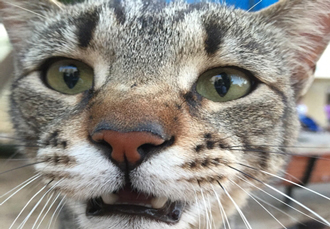 |
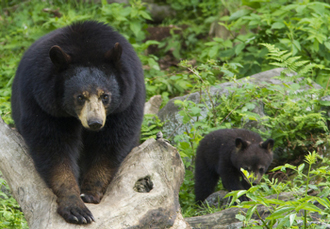 |
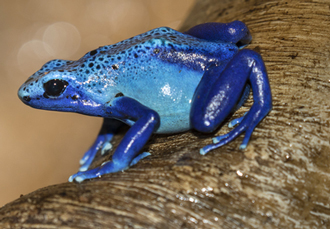 |
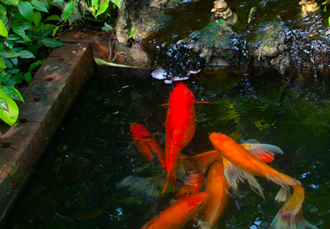 |
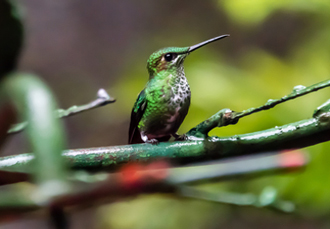 |
The Eyes Have It- Predator and Prey
Quick, what’s the difference between your eyes and the eyes of a gecko? A cat? An owl? A kangaroo? For centuries, humans were in the dark about what and how other animals see. But scientists are learning it's all about the eyes. Students learn how to determine predators from prey by looking at their eye placement, learn the order of the food chain, and use easy-to-make viewers to get an bee, owl, mole, or cat eye view on the world.
You wake up a dark November morning only to find out it's pouring rain, even though the thermometer reads 30 degrees. It's enough to make anyone want to go back between the flannel sheets and set the alarm clock for May. You might wish you could stay in bed all winter, but some animals really do! Brown bears do it, ladybugs too. Bats and snakes, and a frog or two. Groundhogs, chipmunks, in a sleepy state. What do they do? They hibernate! In this lesson students explore the reasons animals eat so much in the fall (would you want a diet where you had to gain 30lbs a week?) learn who actually hibernates, what triggers it, what it really means to be cold blooded, who are nappers and snackers, and why animals hibernate in the first place. Through hands-on (and in) experiments and activities students get a real feel for the effects of animal insulation, track down torpor, figure out how animals find food in the winter, and learn that being asleep can be really hard work.
Did you know that butterflies don't have lungs, that they taste with their feet, and zip up their tongues? Go on a multi-nation adventure and delve deep into the magic and mystery of metamorphing and migrating butterflies. Students learn in-depth the amazing features, life cycles, and self-defense mechanisms of these fluttering creatures, create their own flying butterfly and learn the beauty of symmetry as they construct their own metamorphic masterpiece, and more.
What has the head of a horse, with the sucking snout of an aardvark, spines like a puffer fish, a pouch of a kangaroo, eyes like a lizard, the tail of a monkey, an armor plated body like the Stegosaurus dinosaur, the ability to change colors like a chameleon, and a tail like a monkey? Here’s a hint, it lives at the bottom of the ocean…still no? In this lesson, students learn all about the mysterious and wondrous seahorse, learn how a dad really can give birth, come to understand how the concepts of buoyancy, density, volume, and mass are related to fish and just how they sink or float, learn why some fish have more than one bladder, understand why people create myths, create one themselves, and finish it all up with an original artwork of their own.
Imagine you are a time traveler; you hop in your time machine and travel back through time millions of years to the age of the dinosaurs. You step out of your time machine and gasp, Pterodactyls fly high above a deep swamp filled with huge dragonflies. The earth shakes as an enormous 80-ton Brachiosaurus munches on the top of a tree nearby. On the muddy ground at your feet, something strangely familiar hops by: a frog? Surprised? No, it didn’t sneak its way onto your time machine. Few people realize just how ancient frogs are. In this lesson students learn the secret to frogs’ success, the truth behind hibernation and camouflage, the power of poison, how being a reptile takes a lot of work, just how far a frog can jump, and all about that sticky tongue. They also learn the simple needs of a frog, each stage of their amazing life cycle (including carnivorous tadpoles), dissection without a knife, and that’s only the beginning. Kissing a frog won’t turn it into a prince — except in fairy tales ― but frogs may be hopping toward a real-world transformation into princely allies in our battle with antibiotic-resistant infections that threaten the lives of millions of people worldwide, unless they disappear first. Herpetology, it’s all about the frogs!
Nishikigoi (Koi) Living Jewels
Unlock the mystery of the origins of a species. Students follow the fascinating history of the koi from their humble mud sucking beginnings as dinner-table-destined-bottom-feeding-carp in ancient rice fields through their rise to priceless possessions of royalty and bringers of luck and wisdom. Mendel wasn't the only one experimenting with genetics, humble rice farmers in Japan were some of the earliest genetic manipulators, creating living jewels from their convenient protein source. In honor of the living koi, students will create lovely colorful carp of their own.
With hearts that beat from 500 to more than 1200 times per minute, wings that buzz at as much as 52 beats per second and respiration that can clock in at up to 600 breaths per minute hummingbirds are truly some of the most incredible creatures on the planet. Students delve deep into the lives of these featherweights, making their own (edible) hummingbird nests, carving out birdbaths, finding out just how flight feathers help with flight, and learning to identify different species. Then they follow the flight path and discover if a ruby-throated hummingbird can really fly 500 miles over the Gulf of Mexico with no food or rest and make their own feeder to welcome the intrepid birds home. And at the end of the journey, students craft their own brilliantly feathered friends.
Diving into the Gene Pool Unit
Ever hear the phrase ‘Like father like son?’ In this unit, students learn all about how they inherit their looks, height, size and chemical make-up from their parents! They’ll also meet the amazing 19th century scientist, Gregor Mendel, who used short and tall pea plants to study heredity and have fun with Punnett who mapped out how Mendel did it. They'll construct an edible DNA double helix and make and match bonds before playing with "Doggone DNA" in order to create and decode a “DNA recipe” for their own man’s best friend to observe how variations in DNA lead to the inheritance of different traits. *Note: additional extension activities are available for this unit.
